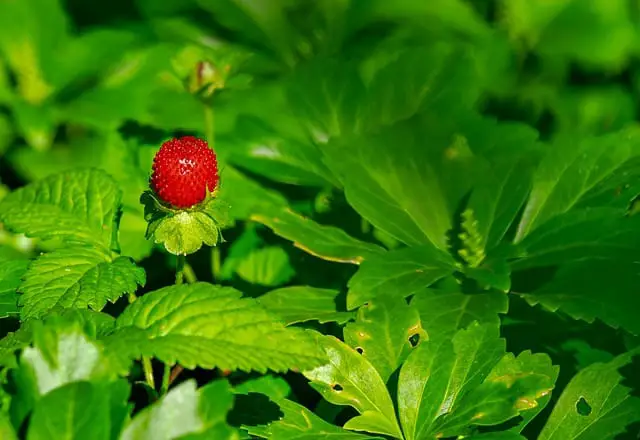Strawberries are a highly prized fruit, but they can be susceptible to a variety of diseases and pests. One common issue that strawberry growers face is brown spots on the leaves.
These spots can be caused by a number of factors, including fungal infections, bacterial infections, and environmental stressors. If left untreated, brown spots can weaken the plant and reduce its yield.
Understanding the causes of brown spots on strawberry leaves is key to preventing and treating the issue. Some common causes include fungal infections like common leaf spot and leaf scorch, bacterial infections like angular leaf spot, and environmental stressors like drought and nutrient deficiencies.
Identifying the specific type of leaf spot is important for determining the best course of treatment.
Fortunately, there are several steps that growers can take to prevent and treat brown spots on strawberry leaves. These include maintaining proper watering and fertilization schedules, practicing good sanitation, using fungicides and other treatments as needed, and selecting disease-resistant varieties.
With proper care and attention, growers can enjoy healthy, productive strawberry plants and a bountiful harvest.
Key Takeaways
- Brown spots on strawberry leaves can be caused by a variety of factors, including fungal and bacterial infections and environmental stressors.
- Identifying the specific type of leaf spot is important for determining the best course of treatment.
- Prevention measures like proper watering and fertilization, good sanitation practices, and disease-resistant varieties can help keep strawberry plants healthy and productive.
Also read:
- How to Treat Brown Spots on Palm Leaves
- How to Treat Brown Spots on Orchid Leaves
- How to Treat Brown Spots on Fig Leaves
Understanding Brown Spots on Strawberry Leaves
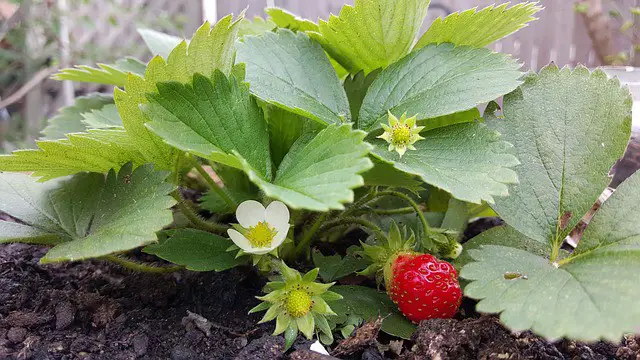
Brown spots on strawberry leaves are a common symptom of a fungal disease called strawberry leaf spot. The disease affects both wild and cultivated strawberries and can cause significant damage to the plant if left untreated.
The symptoms of strawberry leaf spot usually appear on the upper leaf surfaces as round spots with dark purple or reddish-purple margins and white centers. As the disease progresses, the spots may merge and cause the leaves to wither and die.
The fungus responsible for strawberry leaf spot thrives in warm and humid conditions, making it more prevalent in areas with high humidity or frequent rainfall. The disease can also spread rapidly through contaminated soil and infected plant debris.
To prevent the spread of strawberry leaf spot, it is essential to remove any infected leaves or plant debris from the area and practice good sanitation practices. Fungicides can also be applied to the plant to prevent the disease from spreading.
It is important to note that brown spots on strawberry leaves can also be caused by other factors such as nutrient deficiencies, insect damage, or physical injury. Therefore, it is crucial to diagnose the problem accurately before applying any treatment.
Brown Spots on Strawberry Leaves – 3 Common Problems
Brown spots on strawberry leaves can be caused by a variety of factors such as fungal infections, environmental conditions, and pests. In this section, we will explore the most common causes of brown spots on strawberry leaves.
1. Fungal Infections
Fungal infections are one of the most common causes of brown spots on strawberry leaves. The Mycosphaerella fragariae fungal pathogen is a common culprit that causes leaf spots on strawberry plants.
The fungus attacks the leaves and causes small, circular brown spots with gray centers. Over time, these spots can merge and form larger, irregularly shaped lesions. The fungus can also produce sclerotia, which are hard, black structures that can survive in the soil for years.
2. Environmental Conditions

Environmental conditions such as wet weather, rain, and damp, humid conditions can also contribute to the development of brown spots on strawberry leaves. When the leaves remain wet for extended periods, fungal spores can easily spread and infect the plant.
Splashing water can also spread fungal spores from infected plants to healthy ones.
3. Pests
Pests such as spider mites and thrips can also cause brown spots on strawberry leaves. Spider mites are tiny, sap-sucking pests that can cause stippling on the leaves, which appears as tiny brown spots. Thrips, on the other hand, feed on the leaves and cause silvering or bronzing of the foliage, which can lead to brown spots.
Identifying Different Types of Leaf Spots
Brown spots on strawberry leaves can be caused by various factors, including leaf spot diseases. Identifying the type of leaf spot is crucial in determining the appropriate treatment. Here are some common types of leaf spots that affect strawberry plants:
1. Common Leaf Spot
Common leaf spot is caused by the fungus Mycosphaerella fragariae. It is characterized by small, circular, brown spots that have a reddish-purple border. The spots can merge and form irregular shapes, and the affected leaves can eventually turn yellow and fall off.
Common leaf spot can be prevented by ensuring proper plant spacing and good air circulation. Fungicides can also be used to control the disease.
2. Angular Leaf Spot
Angular leaf spot is caused by the bacterium Xanthomonas fragariae. It is characterized by angular, water-soaked lesions that have a yellow halo. The spots can turn brown or black as they age, and the affected leaves can become distorted.
Angular leaf spot can be prevented by avoiding overhead watering and removing infected leaves. Copper-based fungicides can also be used to control the disease.
3. Other Leaf Spot Diseases
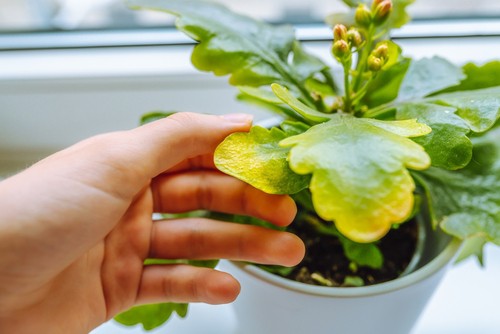
Other leaf spot diseases that can affect strawberry plants include:
- Anthracnose: This fungal disease causes brown or black spots that have a purple border. The spots can merge and form large, irregular shapes, and the affected leaves can become distorted.
- Black spot: This fungal disease causes circular, black spots that have a yellow halo. The spots can merge and form irregular shapes, and the affected leaves can eventually turn yellow and fall off.
- Purple spot: This fungal disease causes small, circular, purple spots that can merge and form irregular shapes. The affected leaves can become distorted and eventually die.
Proper identification of the type of leaf spot is important in determining the appropriate treatment. If the brown spots on strawberry leaves are caused by a leaf spot disease, it is recommended to remove infected leaves and use fungicides as necessary.
Good cultural practices, such as proper plant spacing and good air circulation, can also help prevent leaf spot diseases from occurring.
Effects of Brown Spots on Strawberry Health
Brown spots on strawberry leaves can negatively impact the health of the plant, which can ultimately affect the yield of the fruits. The spots are often a sign of a fungal or bacterial disease, which can spread and cause further damage to the plant.
One of the main effects of brown spots on strawberry health is a reduction in photosynthesis. The brown spots can prevent the leaves from absorbing sunlight, which is necessary for photosynthesis. This can lead to a decrease in the plant’s ability to produce energy, which can result in stunted growth and a lower yield of fruits.
In addition to affecting photosynthesis, brown spots can also impact the overall health of the plant. The spots can weaken the leaves, making them more susceptible to damage from pests and other diseases. This can further reduce the plant’s ability to produce healthy fruits.
Brown spots on the berry caps can also be a sign of disease. If left untreated, the disease can spread to the fruits and cause them to rot. This can result in a significant reduction in yield and quality of the fruits.
To prevent the negative effects of brown spots on strawberry health, it is important to take action as soon as the spots are noticed. This may include removing infected leaves, using fungicides or other treatments, and ensuring that the plants are well-maintained and healthy.
Preventing Brown Spots
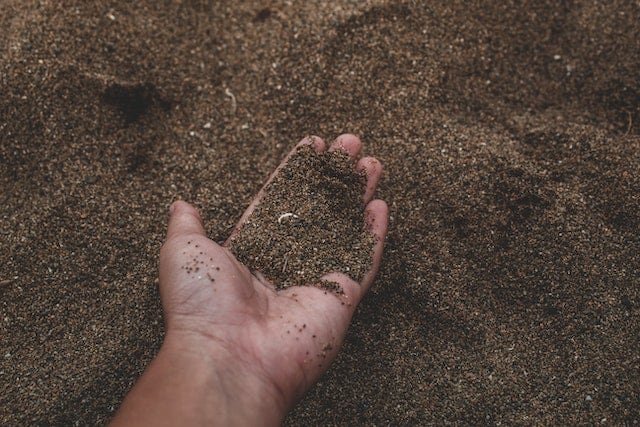
Preventing brown spots on strawberry leaves is essential to maintain the health and productivity of the plants. Here are some tips that can help prevent brown spots on strawberry leaves:
1. Proper Spacing
Strawberry plants should be spaced properly to ensure good air circulation. Crowded plants can lead to poor air circulation, which can cause moisture buildup and lead to fungal infections. Proper spacing can also help prevent the spread of disease from one plant to another.
2. Well-Drained Soils
Strawberry plants prefer well-drained soils. Poorly drained soils can cause water to accumulate around the roots, leading to root rot and other fungal diseases. It is recommended to plant strawberries in raised beds or on mounds to improve drainage.
3. Location
Choosing the right location for planting strawberries is crucial to prevent brown spots on leaves. The location should have good air circulation, receive adequate sunlight, and have well-drained soils. Avoid planting strawberries in areas with standing water or in low-lying areas where water tends to accumulate.
4. Mulch
Mulching can help prevent brown spots on strawberry leaves by reducing the amount of water that splashes up onto the leaves. Mulch also helps to suppress weeds, retain moisture in the soil, and regulate soil temperature. Organic mulches, such as straw or leaves, are recommended.
5. Irrigation
Proper irrigation is essential for preventing brown spots on strawberry leaves. Overhead irrigation or watering can cause water to splash up onto the leaves, increasing the risk of fungal infections. It is recommended to use drip irrigation or a soaker hose to water strawberry plants.
6. Compost
Adding compost to the soil can help improve soil structure, drainage, and fertility. Compost also helps to promote beneficial microorganisms in the soil, which can help prevent disease.
7. Trees
Avoid planting strawberries near trees, as they can shade the plants and reduce air circulation. Trees can also compete with strawberry plants for nutrients and water, leading to stress and increased susceptibility to disease.
By following these tips, gardeners can prevent brown spots on strawberry leaves and keep their plants healthy and productive.
Treatment Options for Brown Spots

Once brown spots have been identified on strawberry leaves, it is important to take action to prevent the spread of the fungus. Treatment options include both chemical and natural methods.
Chemical Treatment
Fungicides can be used to treat brown spots on strawberry leaves. Copper and captan are two active ingredients found in many fungicides that are effective against the fungus. However, it is important to note that copper-containing fungicides should only be used prior to flowering.
Myclobutanil is another active ingredient found in fungicides that can be used to treat brown spots on strawberry leaves. This chemical works by inhibiting the growth of the fungus.
When using fungicides, it is important to follow the instructions on the label carefully. It is also recommended to wear protective clothing, such as gloves and a mask, when applying fungicides.
Natural Treatment
There are also natural options for treating brown spots on strawberry leaves. One option is to remove all affected leaves and discard them. This can help prevent the spread of the fungus.
Another natural method is to spray a solution of baking soda and water onto the affected leaves. This solution can help reduce the growth of the fungus.
It is important to note that natural treatments may not be as effective as chemical treatments, especially in severe cases of brown spots on strawberry leaves.
Additional Factors Affecting Strawberry Leaf Health
In addition to diseases, there are several other factors that can affect the health of strawberry leaves. Understanding these factors can help gardeners prevent brown spots on their strawberry leaves and maintain healthy plants.
1. Growing Season and Fertilizer
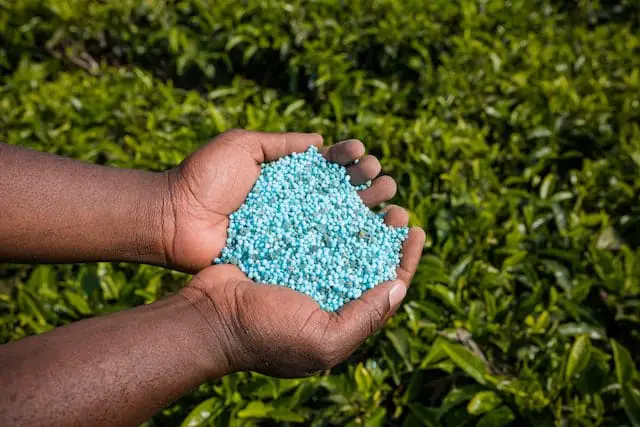
Strawberries require adequate fertilizer to grow and produce fruit. However, too much nitrogen in the soil can lead to leaf burn and brown spots. Gardeners should follow the recommended fertilizer application rates and schedule for their growing season.
2. Acidity and Soil
Strawberries prefer slightly acidic soil with a pH between 5.5 and 6.5. If the soil is too alkaline, the plants may develop nutrient deficiencies and brown spots on their leaves. Gardeners can test their soil pH and adjust it as needed to maintain optimal growing conditions.
3. Pests and Diseases
Pests such as spider mites and aphids can damage strawberry leaves and make them more susceptible to disease. Gardeners should monitor their plants for signs of pest infestations and take appropriate measures to control them.
4. Roots and Runners
Healthy roots are essential for healthy strawberry plants. Gardeners should ensure that their plants have adequate space and nutrients to develop strong root systems. Additionally, runners should be pruned as needed to prevent overcrowding and promote healthy growth.
5. Verticillium Wilt and Leaf Scorch
Verticillium wilt and leaf scorch are fungal diseases that can cause brown spots on strawberry leaves. Gardeners should monitor their plants for signs of these diseases and take appropriate measures to prevent their spread.
6. Overwinter Care
Proper care during the winter months can help prevent brown spots on strawberry leaves in the spring. Gardeners should ensure that their plants are properly mulched and protected from frost and other winter weather conditions.
7. Stems and Undersides of Leaves
Brown spots on strawberry leaves can also be caused by damage to the stems or undersides of the leaves. Gardeners should be careful when handling their plants and avoid causing unnecessary damage.
8. Cooperative Extension and Label Instructions
Gardeners can consult their local cooperative extension office for advice on growing strawberries and preventing brown spots on their leaves. Additionally, they should carefully read and follow all label instructions for fertilizers and other products used on their plants.
9. Septoria
Septoria is a fungal disease that can cause brown spots on strawberry leaves. Gardeners should monitor their plants for signs of this disease and take appropriate measures to prevent its spread.
Conclusion
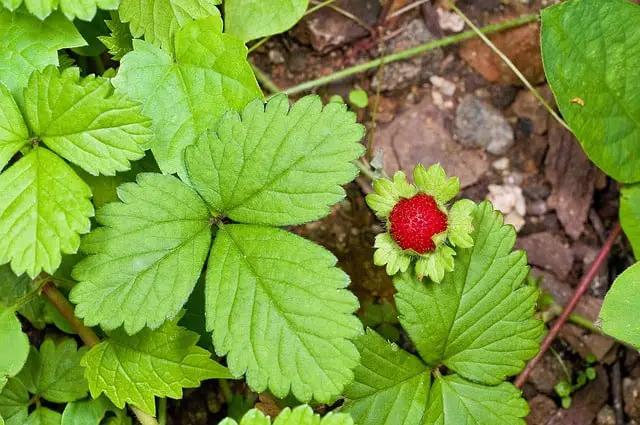
Treating brown spots on strawberry leaves is crucial to ensure the health and productivity of strawberry plants. By identifying the underlying cause of the brown spots, gardeners can take appropriate measures to prevent further damage. Here are some key takeaways from this article:
- Brown spots on strawberry leaves can be caused by various factors, including fungal diseases, insect infestations, and environmental stress.
- Fungal diseases such as common leaf spot, botrytis rot, and anthracnose can be controlled by applying fungicides and practicing good cultural practices such as proper spacing and adequate air circulation.
- Insect infestations such as spider mites and thrips can be controlled by applying insecticides and using physical barriers such as row covers.
- Environmental stress such as drought and nutrient deficiencies can be prevented by providing adequate water and nutrients to the plants.
- Regular monitoring and early intervention are key to preventing brown spots from spreading and causing significant damage to the plants.
Frequently Asked Questions
What are some natural fungicides for treating strawberry leaf diseases?
There are several natural fungicides that can be used to treat strawberry leaf diseases. One of the most effective is neem oil, which is derived from the neem tree and has antifungal properties.
Other natural fungicides include baking soda, which can be mixed with water and sprayed on the leaves, and garlic, which can be boiled in water and used as a spray.
It is important to note that while natural fungicides can be effective, they may not be as potent as synthetic fungicides and may need to be applied more frequently.
How can I treat white spots on my strawberry plants?
White spots on strawberry plants are often caused by powdery mildew, a fungal disease that can be treated with a variety of fungicides. Some natural remedies for powdery mildew include spraying the plants with a mixture of milk and water, or using a solution of baking soda and water.
It is important to address powdery mildew as soon as possible, as it can spread quickly and cause significant damage to the plants.
What is the best way to treat brown edges on strawberry leaves?
Brown edges on strawberry leaves are often caused by sunburn or dehydration. To prevent this, make sure the plants are watered regularly and are not exposed to direct sunlight for extended periods of time.
If the leaves have already turned brown, they can be trimmed off with a pair of clean scissors. It is important to make clean cuts to prevent the spread of disease.
What causes yellow spots on strawberries and are they safe to eat?
Yellow spots on strawberries are often caused by a fungal disease called anthracnose. While the spots themselves are not harmful, they can lead to rot and spoilage of the fruit.
To prevent this, it is important to remove any infected fruits as soon as possible and to treat the plants with a fungicide. It is generally safe to eat strawberries with yellow spots, but it is recommended to cut away any affected areas before consuming.
How do I fix leaf spots on my strawberry plants?
Leaf spots on strawberry plants can be caused by a variety of fungal diseases, including leaf blight and gray mold. To treat leaf spots, it is important to remove any infected leaves and to treat the plants with a fungicide.
It is also important to make sure the plants are well-ventilated and not overcrowded, as this can contribute to the spread of disease.
Should I remove brown leaves from my strawberry plants to prevent the spread of disease?
Yes, it is recommended to remove brown leaves from strawberry plants to prevent the spread of disease. Infected leaves can harbor fungal spores and contribute to the spread of disease.
When removing brown leaves, it is important to make clean cuts with a pair of clean scissors and to dispose of the leaves in the trash, rather than composting them.

Hey, I’m Lisa and I’ve been an avid gardener for over 30 years. I love writing, talking and living in the garden! Feel free to connect with me on my socials below

